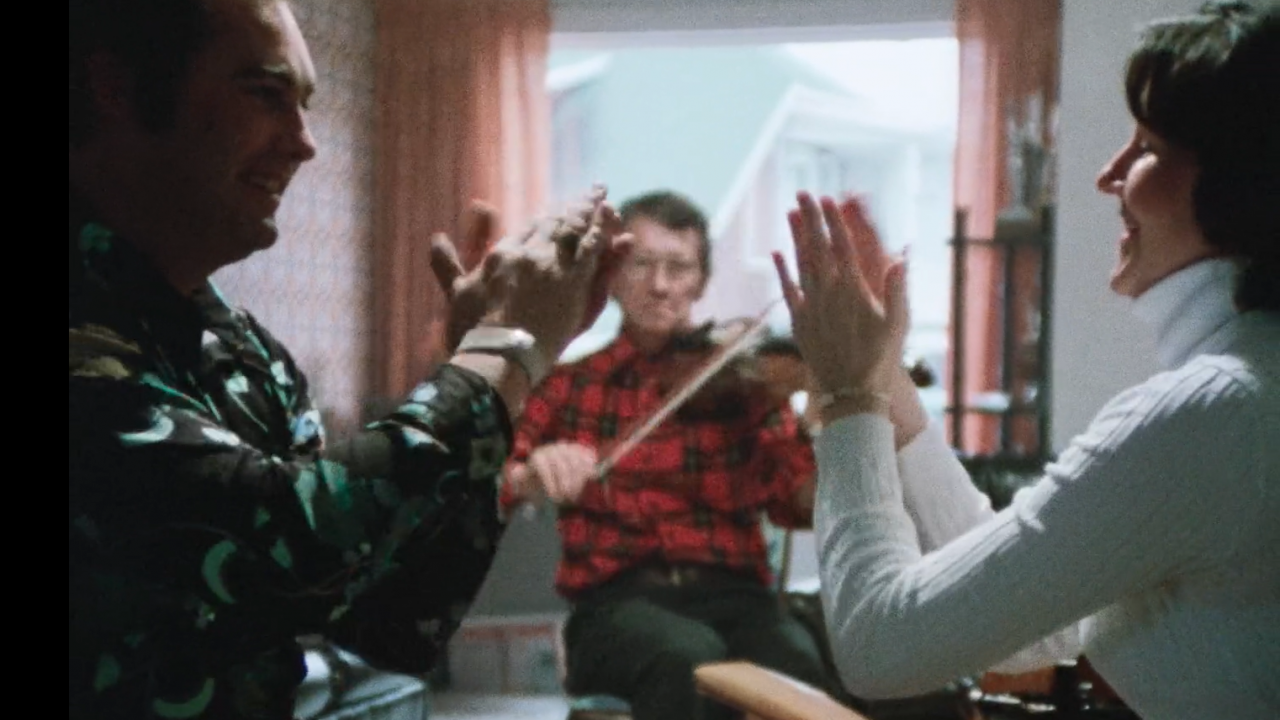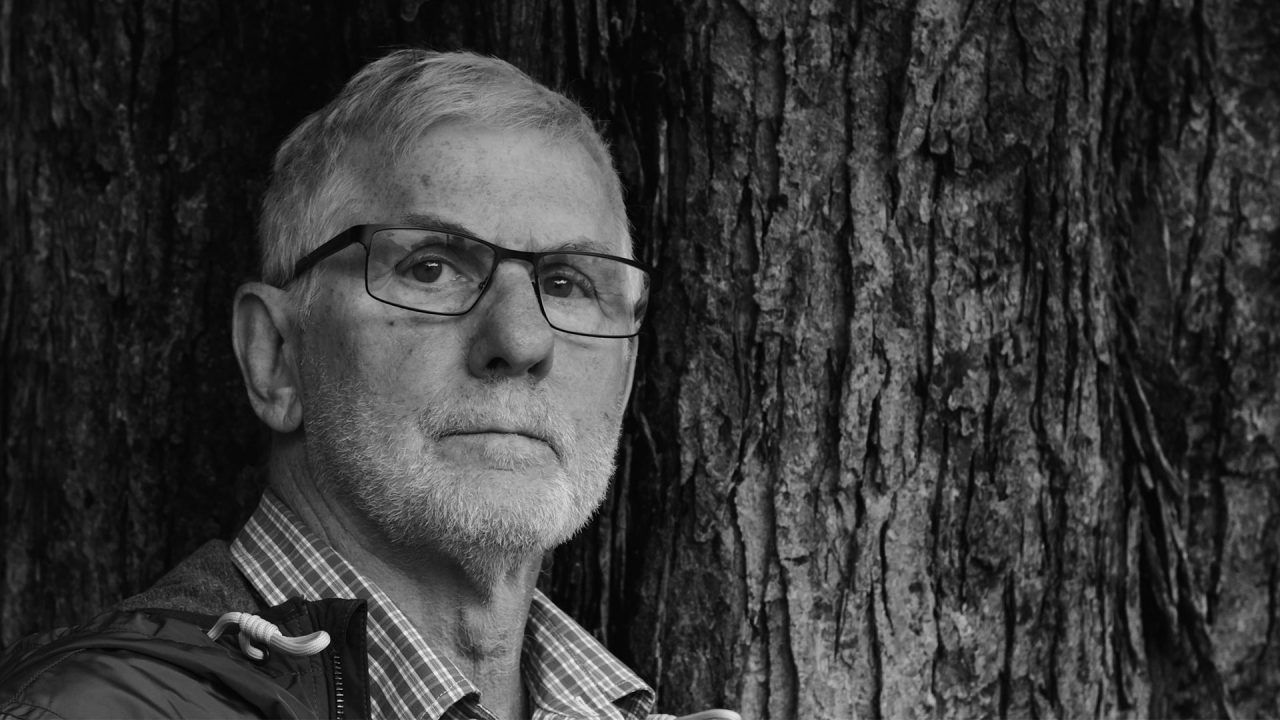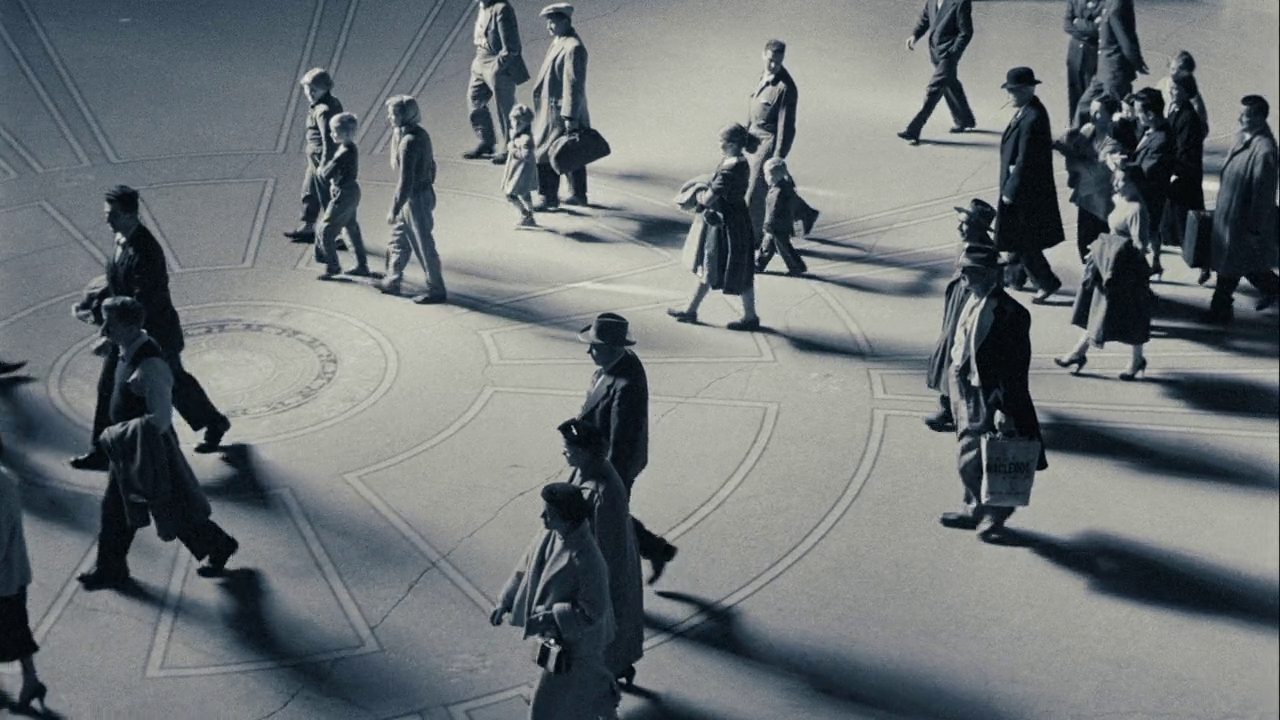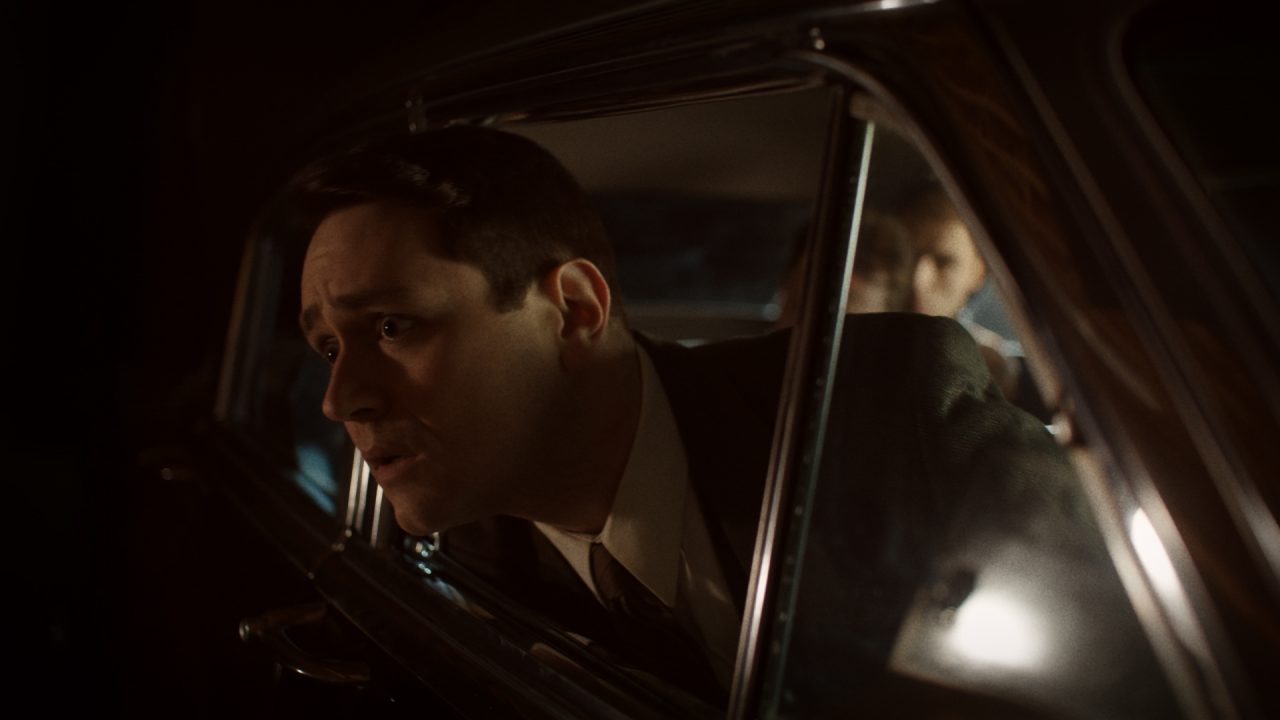
Higher Learning | Le son des Français d’Amérique
Higher Learning | Le son des Français d’Amérique
We often hear the term “folk traditions” used to describe arts and crafts or know-how from bygone eras. We might easily view these traditions as obsolete or hackneyed, but they are a source of immense pride for the people who work so hard to keep them alive, and indeed they constitute a mode of survival for many communities.
The most vulnerable societies tend to remain profoundly attached to their customs and traditions—they are a kind of social safety net, an anchoring buoy. Le son des Français d’Amérique is a series of 27 documentary shorts that explore culture, mother tongue and memory. These jewels of direct cinema depict people who are steeped in their traditions and have assumed the task of passing them on. While these films are of interest to the vast majority of students, they offer especially fertile ground for discussion in faculties of music (e.g., for teaching musical literature), history, literature, sociology, anthropology and philosophy.
Most often the product of oral tradition, folk songs and music are passed on to new generations invisibly, also known as intangible cultural heritage. A veritable time machine, folk tradition is an exceedingly natural way of ensuring the survival of a people, a village or a family: a mirror in which people can recognize themselves and know themselves. A people’s traditions are therefore stewards of the past, but they’re also made, unmade and transformed through successive encounters, cross-pollination, defeats and victories.
The images, faces and shorelines in these films can now be seen in all their luminous glory thanks to painstaking restoration work that relied on the original negatives. The Éléphant project, the Cinémathèque québécoise and the NFB, supported by UNESCO and generous donors, and with the assistance of André Gladu and a passionate team, have preserved these iconic works and made them accessible to new viewers.
Tall Tales of History
These films offer a unique reading of the historical events that carried francophones to the four corners of the world: the Bretons who journeyed to Canada, the Acadians to Quebec then back to France and to Louisiana, and even, in the wake of the 1837–39 Rebellions, the Patriotes who sought exile in the United States, England and as far away as Australia. They also bear discreet witness to an everyday existence that could be harsh, one that francophones managed to endure thanks to the memory of their traditions. Even in migration, those traditions were a bulwark against assimilation and a vital tool of affirmation.
Even 40 years after the films were shot, this cultural compendium is a curiously refreshing look at the descendants of the children of New France. We hear the tragedies and joys of life distilled in song verses, like so many rickety skiffs carrying the memory of a world and a people. These outlets of pent-up energy happen at Friday night dances, in radio broadcasts and at folk festivals where the curiosity of a new generation shapes what could be called a people.
A People in a Complex Context
Many of the early Canadiens landed in the New World with a French-tinged colonialist vision, yet paradoxically found themselves in the minority in a land changed by war, where the French had been stripped of so much—even their names. Their connections with the First Nations also unravelled after the arrival of the British. Francophones found themselves isolated. That historical irony places them in a complex context today, carrying with them both a problematic colonial heritage and the consequences of their own domination.
Memory Games
If historians generally rely on the written word, ethnologists’ primary source is oral tradition. Verba volant, scripta manent (“Spoken words fly away; written ones abide”), the proverb goes—but the memory of a people passed on by word of mouth, mimicry and practice also leaves deep imprints. This wisdom, transmitted across generations, seems almost innate.
Inviting us to lend an ear to the memory of time, Le son des Français d’Amérique is arguably the most significant cultural mapping we have of these French speakers whom the poet Gilbert Langevin fondly dubbed Amériquois. Brought together in these portraits, these multiple traditions for once coalesce into a whole, charting the birth of what could be a national musical tradition.
Folklore, the science of peoples, illustrates a broad, comprehensive range of knowledge accumulated through oral transmission. Through that knowledge, we can better map the connections among individuals, their way of life, their notions of sharing, love and responsibility, and even their profound hopes.
In these films, we see historic homes. People baking bread, performing gestures dictated by, connected to, in symbiosis with daily life. We hear accents seldom heard today. These memories humbly committed to film resonate today with incredible insights into a people uprooted, but to whom the comforting melodies of a few fiddlers meant shelter for one moment longer.
A Cornerstone of Oral Transmission
The turlutte (“mouth reel” or “mouth music”) heard in many of the films is a melodic vocal style that punctuates one or more syllables. It can function as a preamble, a bridge or a complete chorus. This music is made up of fredons (hence the verb fredonner, “to hum”), characterized by variations on recurring motifs.
The phonemes obey aesthetic criteria, juggling amalgams of connected sounds, much like rhymes. There can also be wordplay; the meanings becoming secondary as the words simply serve the singers’ artistic, playful impulse. Traces of this very old technique can be found as far back as the Middle Ages, and it even gave birth to entire systems for teaching music.
In early-1600s Italy, composer Francesco Rognoni Taeggio published La Selva de varii passaggi, a treatise that described in detail vocal techniques for learning music using onomatopoeia. These gestures were presented as nuances and flourishes. So a turlutte can be used to learn, understand and transmit.
This Italian work was of limited use to Germans and Anglo-Saxons, however, as sounds like r, tu and du posed pronunciation challenges. More than a century later, another treatise, by German composer and flautist Johann Joachim Quantz, Versuch einer Anweisung die Flöte traversiere zu spielen, proposed an adapted method in which the Latin turlutes were replaced by did’ll or didelam sounds.
Universities as Guardians of Oral Tradition
In Norway, I discovered a university building where every music student in the country, regardless of their specific discipline, is required to stay to earn credits in traditional music. This ensures that every generation of artist can get to know and understand the music of their nation, drawing inspiration from it or inspiring others in turn. This strikes me as a charming idea and a mark of a mature society. When might we hope to see a department dedicated to the teaching of traditional music in Quebec universities? Might we devise a teaching method based on the idea of turlutte and onomatopoeia to grasp the inflections and subtleties of our own traditional music?
I can easily imagine episodes of this series being used in music programs across the country to spark enriching discussions and reflections on the heritage and modern role of traditional music and folklore. Here are some questions, to be discussed with peers, that come to mind:
- What do you consider to be some examples of intangible cultural heritage?
- How does traditional Quebec music fit into this concept?
- Into what historical circumstances do traditional music styles fit?
- What parallels could be made between the birth and spread of American jazz and Quebec traditional music?
- What sorts of different roles did the traditional arts play for earlier generations?
- Do those roles still exist, or have they changed today?
- What influences have shaped music, singing and dancing in our communities?
- Are those influences specific to the francophones of North America?
- To what extent is North American francophone identity a collective one?
- What are its key defining characteristics?
- How does oral tradition shape a sense of shared cultural identity?
- How can oral tradition survive in our modern world?
A Conclusion with No End
Because traditions are anchored in daily life, meaning and context must be reinvented to preserve songs whose existence was shaped by the rhythms of professions and gestures that have often disappeared. Each of the 27 short films in this series is a cry from the heart for us to understand the importance of every link in the chain of our history. We therefore have a responsibility to be fully aware of these legacies, so that we can make fully informed collective decisions about their future. As director of the Festival Chants de Vielles, I plan to show these films as often as possible there and during concert performances with my partners in the group Le Vent du Nord. We have a duty of memory toward these films’ messages and messengers.
The Romanticism of Resistance
Tradition, like the seasons, dependable yet changing, structures time and imparts a feeling that’s particularly comforting. Today’s generations may be casting aside—whether knowingly or unknowingly—some of the distinctive traits of the artisans who came before them, but they can also help techniques and practices evolve, by introducing their own ideas and vision.
I wish you all happy viewing, thoughtful reflection and long-lasting memories!
Originally a jazz piano student and later a hurdy-gurdy player and builder, Nicolas Boulerice began his career as a performer in the late 1990s with the group Ad Vielle que Pourra, before founding the group Le Vent du Nord, with whom he’s recorded 12 albums and given some 2,200 concerts. He has also released three solo records that blend the singer-songwriter ethos with a re-reading of traditional chanson known as “Cool Trad.” In addition, Boulerice is a member of production and management firm La Compagnie du Nord and director of the Festival Chants de Vielles. A lover of words, he’s also written a poetry collection, published by Triptyque, and with Normand Baillargeon co-wrote the preface to En montant la rivière, a collection of essays on the history of traditional Québécois song, published by Éditions Mémoire d’encrier. He is also an in-demand guest speaker, writer and host.
Pour lire cet article en français, cliquez ici.
Discover more Educational blog posts | Watch educational films on NFB Education | Watch educational playlists on NFB Education | Follow NFB Education on Facebook | Follow NFB Education on Pinterest | Subscribe to the NFB Education Newsletter



